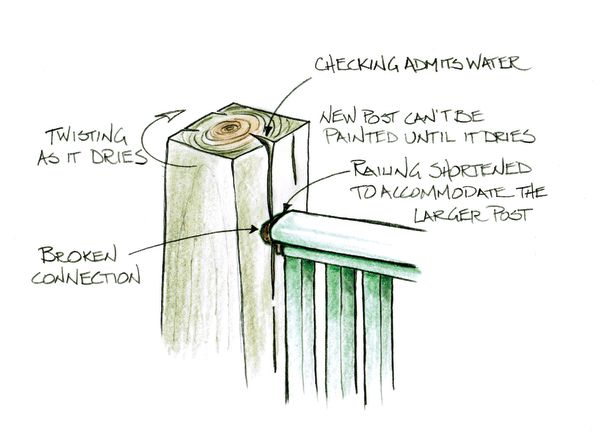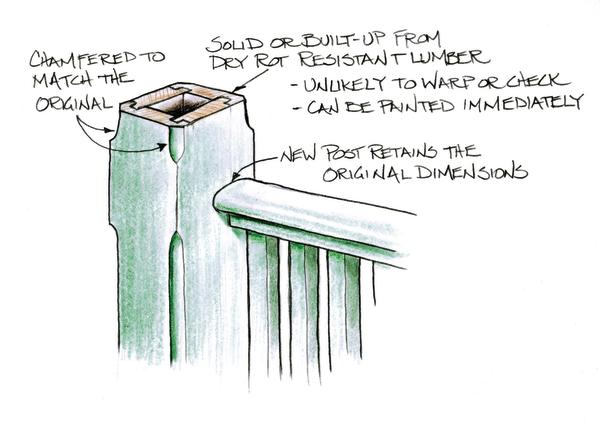Because of the relative expense and difficulty in obtaining high-quality, rot-resistant wood, many people inevitably turn to the endless racks of pressure-treated (PT) lumber sold at every home center. Wood species only marginally resistant to fungal attack are infused at high pressure with a fungicide. The process also introduces a large quantity of water into the wood. I’ve been a fan of PT lumber when it’s used as structural material outdoors or where close ground contact is likely. Literally millions of decks have been constructed from PT wood all over America. With their exposed bolted connections, thousands of deck screws, and coarse assembly, they are functional. By comparison, however, 19th and 20th century porches are fine furniture.

Wrong Way: Don’t Rely on PT Stock Parts
The likelihood of today’s common dimensional lumber matching older material is well, unlikely, and aesthetics suffer. Columns made of pressure-treated wood, for example, measure about 5½” x 5½”or 3½” x 3½”. Buying modern off-the-rack columns or posts that are too wide or too narrow means you’ll have to alter the railing, and perhaps even bases and capitals. In addition, PT columns and railings suffer from defects as they dry, which makes me avoid the use of PT wood for these elements. PT lumber has a high moisture content when it’s purchased; as it dries, it’s prone to such warping behaviors as checking and twisting. Checking or splitting may allow water to enter and sometimes soak the end-grain of the handrail or toerail. Twisting of the lumber is worse yet, as it breaks the connections between the balustrade and the column. At the same time it exposes the end-grain of any associated components. In the case of round columns, severe twisting can move the capital so that it is no longer centered on the column under the soffit.

Right Way: Use Traditional Construction
When porch repairs are needed, it is always better to confine the use of PT wood to the structural components of the porch—generally, the floor joists and stair stringers. On the other hand, porch posts and columns, round or square, can be milled to almost any size using naturally rot-resistant wood. Some manufacturers produce columns in a variety of styles and sizes, which you can choose “off the rack.” As a general rule of thumb, it is always best to replace porch components with rot-resistant lumber, purchased or custom-milled to the same size as the original. This one-time expense will reap ample rewards, retaining both the aesthetics of traditional design and structural integrity for a long life.







